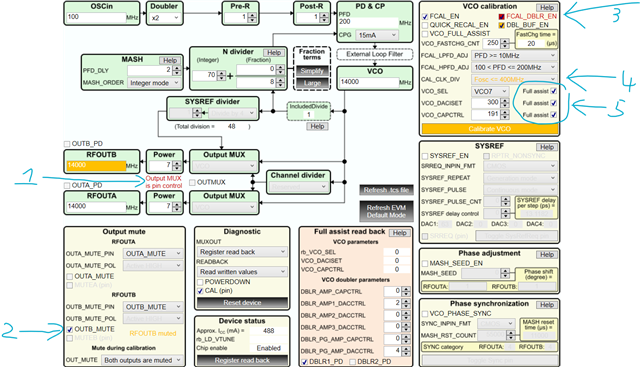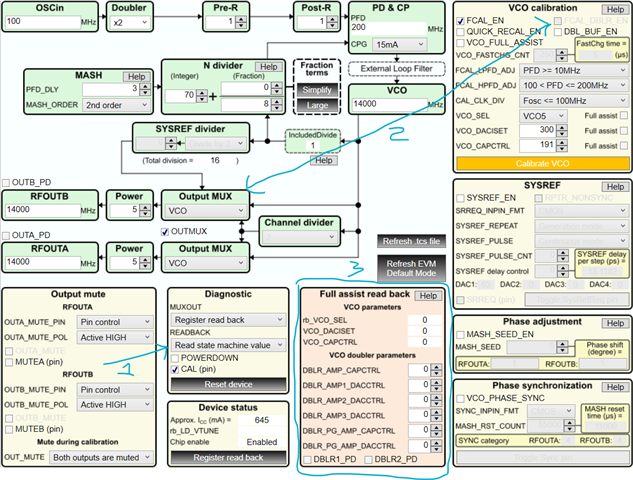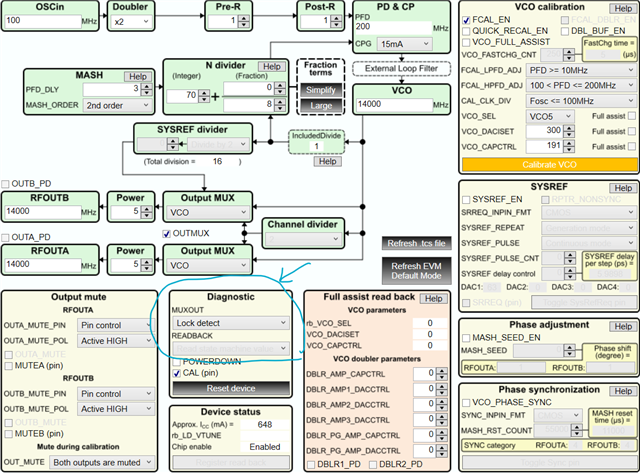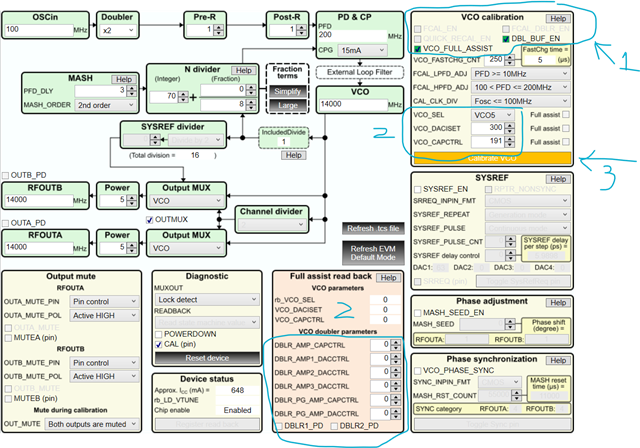Other Parts Discussed in Thread: LMX2595
Tool/software:
Hi Noel,
I have the full assist working in my setup.
I created routine to tune across the band and record VCO_SEL, VCO_DACISET, and VCO_CAPCTRL. I initialize with R4[14:12] asserted to force these values.
To tune, I send R5, R6, R14, R3, R1 and R8 and everything works fine.
I thought I would enable double-buffering R16[8] to gain back a little on tune time, but I'm not sure what to send in R0 for full-assist mode.
I tried a couple things (i.e. disabling all the calibration), but didn't have any luck tuning.
Can double-buffering be used in full assist mode? If so, what should I send in R0?
Thanks,
John







